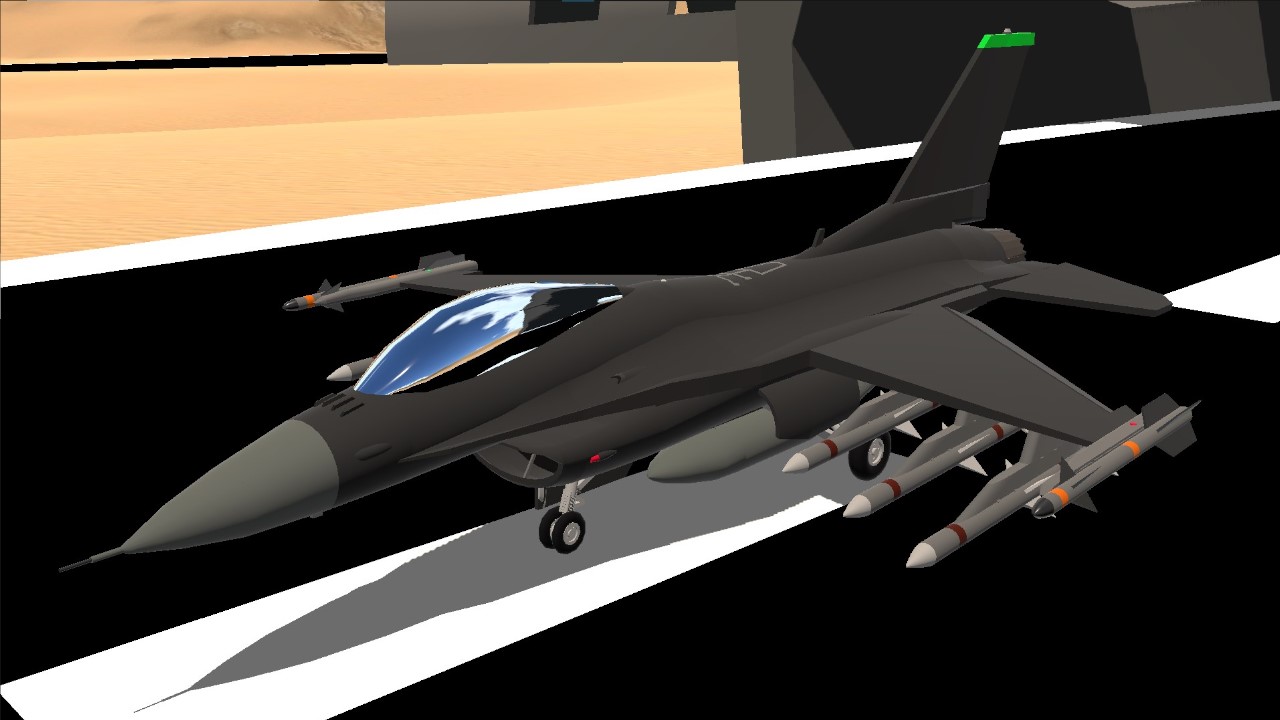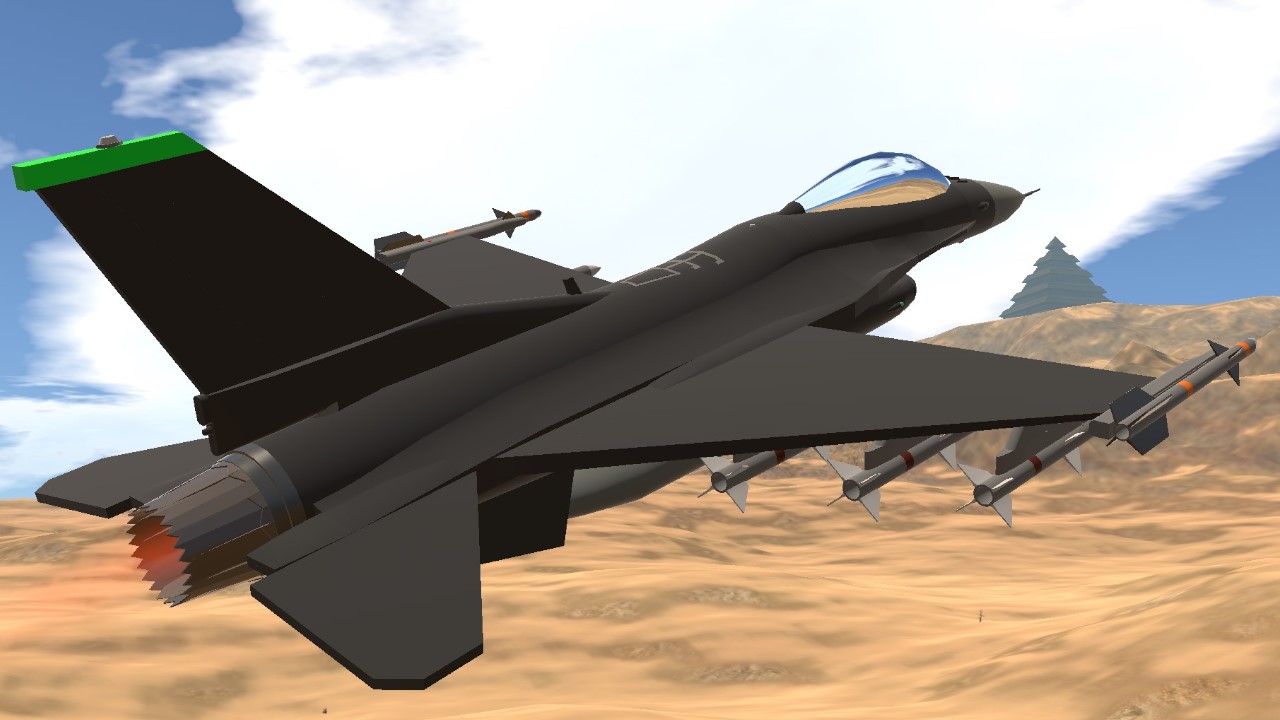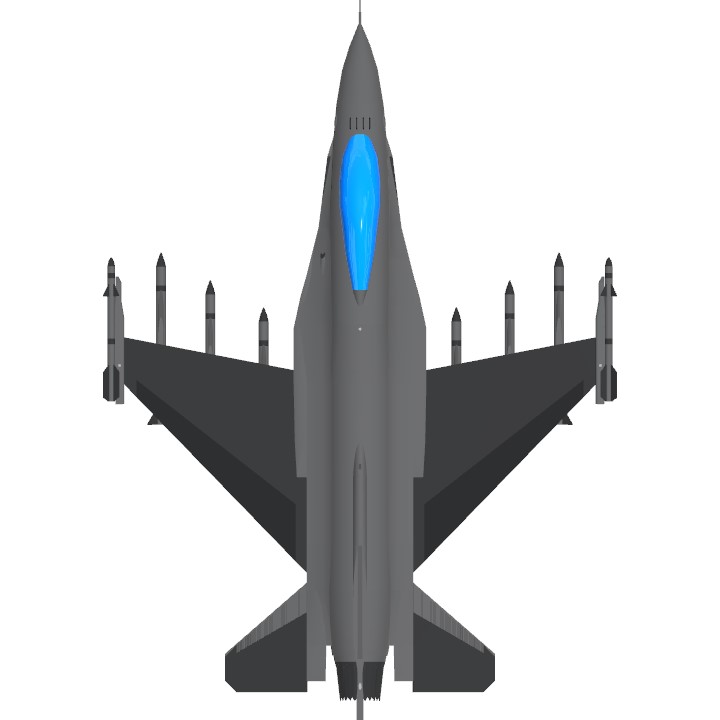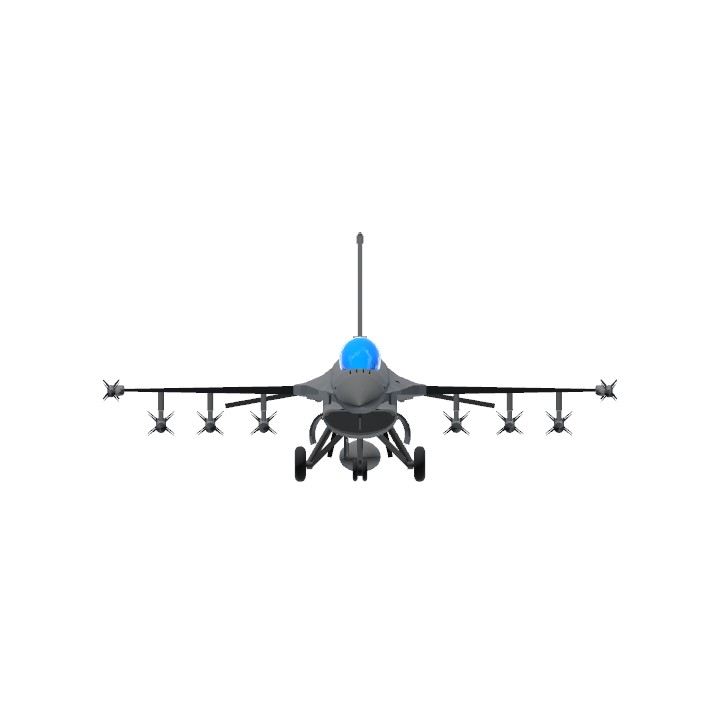F-16T Alsayd Falcon
-Lore-

Following the end of the Three-Week War in 2002, Pulchrituria pulled through with their promised sales to boost Tanruilian military power following their signing of the Eastern Shield Accord (ESA)--also known as the Free World Alliance (FWA)--an intergovernmental military & economic alliance established for its equally-benefitting, Pulchrituria-aligned member states. Through this new alliance, the desert nation of Tanruil was given the opportunity to purchase Eastern military equipment--apart from the Pulchriturian equipment they had received covertly during the build-up to the Three-Week War--with the boost in their military budget following their recent "flash" conflict.
Tanruil purchased millions of dollars-worth of Eastern-made military weapons, ammunition, vehicles, aircraft, and utility using money from their nation's economic build-up over centuries of peace and trade to modernize the standard of their Tanruilian Self-Defense Force (TSDF) and their Tanruilian Air Defense Force (TADF)--including a brand new fleet of F-16C's to add to their new Agile Eagles--as part of their integration with the Free World Alliance.
The Tanruilian Air Defense Force, being known as the home of the world's finest military aviators, was very impressed with the capabilities of the F-16 as a multirole fighter that performed all of its roles exceptionally, while also realizing the importance of energy retention over the more low-speed capabilities they found on the Natsikrovian fighters that they had before.
Following this, the TADF wanted to commission an air-superiority version of the F-16C with the aim of taking the F-16C's performance, removing its weaknesses in the low-speed spectrum, and improving on its strengths everywhere else. They aimed for short takeoff & landing capabilities for usability on their roads and their hazardous desert sands, all in the package of a more cost-effective aircraft than the Agile Eagles already in their inventory. This standard would be called the F-16T program, with "T" simply standing for "Tanruil".
Enter the newly-formed Tanruilian Defense Coordination (TDC)--a newly-formed organization of Tanruil's engineering firms made for the sole purpose of developing license-made military equipment, manufacturing, and maintaining all existing equipment. They would be given five F-16C's at the beginning of 2003 to be modified for the new F-16T standard.
After 3 years of modifications, flight testing, weapons integration assisted by the Pulchriturian Technical Institute (PTI), and even two losses in both airframes and pilots, Tanruil's brand new air-superiority fighter would make its first public flight during the 2006 International Aerospace and Aviation Festival (IAAF)--a month-long celebration of the freedom of manned flight hosted by Tanruil on November of every year. Since the event is a time where all hostilities are cast aside, it was the perfect place for Tanruil to show off their new home-grown fighter.
And, during their part of the airshow, they indeed stole the show. The three new F-16T's impressed spectators, civilian and military alike, as they took off from the runway of the airfield being used for the festival, lifting off the ground at speeds as low as 200 km/h.
They turned harder and faster than even the Pulchriturian F-16's could.
They pulled smaller min-radius turns while pulling higher degrees of AoA than even the likes of Natsik Flankers and Pulchriturian Hornets.
Not to mention the supermaneuverability showcased by the aircraft, wowing the crowd with higher-speed kulbits, cobras, and controlled flatspins in a show of incredible nose authority.
But what impressed everyone in the show was how different the F-16 was. Its incredible maneuverability, low stall speed, and short takeoff distances had three culprits: more-powerful F-16 engines with 3-D thrust vectoring nozzles clearly reverse-engineered from the Agile Eagles' own, forward-swept wings that even aided in reducing the aircraft's radar cross-section due to the lessened amount of 90-degree angles on the wing area, and stealth coating that capitalized on the reduced radar cross-section by using radar-absorbent material. All of these improvements were topped-off with a slightly-larger and more powerful AESA radar to aid in the modified F-16's new role as an air-superiority fighter.
After the showcase of the F-16T's maneuverability and speed, Pulchrituria sent some of their own F-16's and even Agile Eagles to participate in joint military exercises with and even against the three F-16T's, after which the Pulchriturian pilots reported that the F-16T's "flew like a bat out of hell in BFM, and slapped the shit out of our Falcons in BVR when we went up against them. Only the Agile Eagles stood a chance and--even then--only in BVR."
It was during these joint exercises that Pulchriturian Air Forces learned of the F-16T's designation: "Alsayd Falcon", with Alsayd being Tanruilian for "hunting" or "the hunt."
-Description-

Meet the F-16T Alsayd Falcon, a fictional, supermaneuverable, single-engined, air-superiority fighter based on the proposed F-16FSW. 3-D thrust vectoring and strict fly-by-wire allow for stability on what would otherwise be a very unstable aircraft, which allows incredible turn rates and nose authority.
On it is a paintjob akin to the real-life F-16 Have Glass paintjobs, which actually makes this aircraft bear resemblance to the C&C Red Alert 2 Black Eagles. Huh.
Using a nose-mounted 20mm M61A1, AIM 9X's, and AMRAAM's, take advantage of the aircraft's unstable & computer-assisted stability to cleanse the airspace of threats both within and beyond visual range.
-Loadouts-
Current Loadout - 2x Drop Tank, 2x AIM-9X, 6x AIM-120C
Alt. Loadout 1 - Clean
-Controls-
Normal [Throttle]/[Pitch]/[Roll]/[Yaw]/[LandingGear]
- [Throttle = 85% to 90%] Military Power
- [Throttle = 90% to 100%] Afterburner
[VTOL] Elevator Trim (Inverted)
[Trim = -100% to 0%] Flaps (Inverted)
[Trim = 0%] Auto Flaps, [Trim = 0% to +100%] Flaps Up Override
[FireGuns] Fire 1x 20mm M61A1
[AG1] Lights
[AG2] Reduced-Stability Mode (RSM)
[AG8] Master Arm
Hardpoint Activation Groups
[AG3] Wingtip Hardpoint AIM-9X Manual Release
[AG4] Wing Hardpoint 1 AIM-120C Manual Release
[AG5] Wing Hardpoint 2 AIM-120C Manual Release
[AG6] Wing Hardpoint 3 AIM-120C Manual Release
[AG7] Fuselage Center Hardpoint Drop Tank Release
-Author’s Notes-
- Fuel and gun ammo is unlimited.
- On takeoff, I recommend 60% trim with auto flaps enabled. Get to around 200 km/h (yes) and give slight taps for the pitch to avoid tail striking and shorten the takeoff distance. (For keyboard users)
- On landing, use the trim to achieve your glide slope and adjust using pitch. (For keyboard users)
- The aircraft has an incredibly low stall speed which may make landings slightly difficult. Make sure you use at least 5% throttle during landings so that the TVC can continue stabilizing the aircraft.
- To perform a cobra maneuver, slow to 680 km/h, throttle to military power/afterburner (if you haven’t already), activate RSM, and pitch up. Pitch down gently to bring the nose back down and disable RSM.
- To perform a kulbit, slow to 680 km/h, throttle to military power/afterburner (if you haven't already), activate RSM and pitch up. Release pitch input as your rotation ends and let the plane level out on its own, or guide the nose back to the flight path. Roll stability will be lost at speeds above 400 km/h
- To perform a falling leaf maneuver, slow to 680 km/h, activate RSM, and roll & pitch up simultaneously to initiate the spin. Then, once the spin initiates, release pitch input and use yaw to speed up/slow down the spin to your liking. To recover, counter the spin direction with yaw, point the nose in the aircraft's flight path, and build forward momentum before disabling RSM. Warning: You may be significantly lower in altitude than where you started.
-Final Notes-
- This aircraft served as my little mental exercise in trying to figure out the nitty-gritty of fly-by-wire. Though it did not turn out as stable as I had hoped, nor as realistic, it did enlighten me to figuring out how some of the FunkyTrees code worked. Like how the x in, say, PitchRate/x or YawRate/x is a limiter in degrees-per-second, beyond which the inputs will actually begin going against the user like with the AngleOfAttack code. It makes me glad to know that I can return to the Agile Eagle and give it a less-nauseating but still-combat-efficient roll rate.
- Through the fly-by-wire testing with this aircraft, I came to learn that the control surfaces have less authority at higher altitudes, and that the wobble that happens at high speeds due to the fly-by-wire is less likely to happen at higher altitudes for the same reason. Thanks to the game's physics...apparently one should just quit trying to hit mach 1 at less than 10,000 feet.
-Credits-
- @ReinMcdeer - for the original F-16C I modified, also the F-16C in its air-to-air loadout used in one of the screenshots.
- @Guyfolk - mainly for the aircraft I used (or tried to use) as a reference for flight performance, relative to the performance I was going for
Specifications
Spotlights
- Erc90F4RU 3.0 years ago
General Characteristics
- Predecessor F-16C Viper V4.2
- Created On Windows
- Wingspan 35.0ft (10.7m)
- Length 49.8ft (15.2m)
- Height 17.7ft (5.4m)
- Empty Weight 20,363lbs (9,236kg)
- Loaded Weight 35,162lbs (15,949kg)
Performance
- Power/Weight Ratio 0.932
- Wing Loading 57.0lbs/ft2 (278.1kg/m2)
- Wing Area 617.2ft2 (57.3m2)
- Drag Points 1479
Parts
- Number of Parts 258
- Control Surfaces 3
- Performance Cost 1,263







@Gryphus322 jeeeezz, that kinda soundss goood
@teddyone02 we shall call it the Su-16 Fighting Berkut
F-47 Berkut
@Erc90F4RU We will name this the F-16Ain't
Alternative F-16A
Credits:
@ReinMcdeer
@GuyFolk